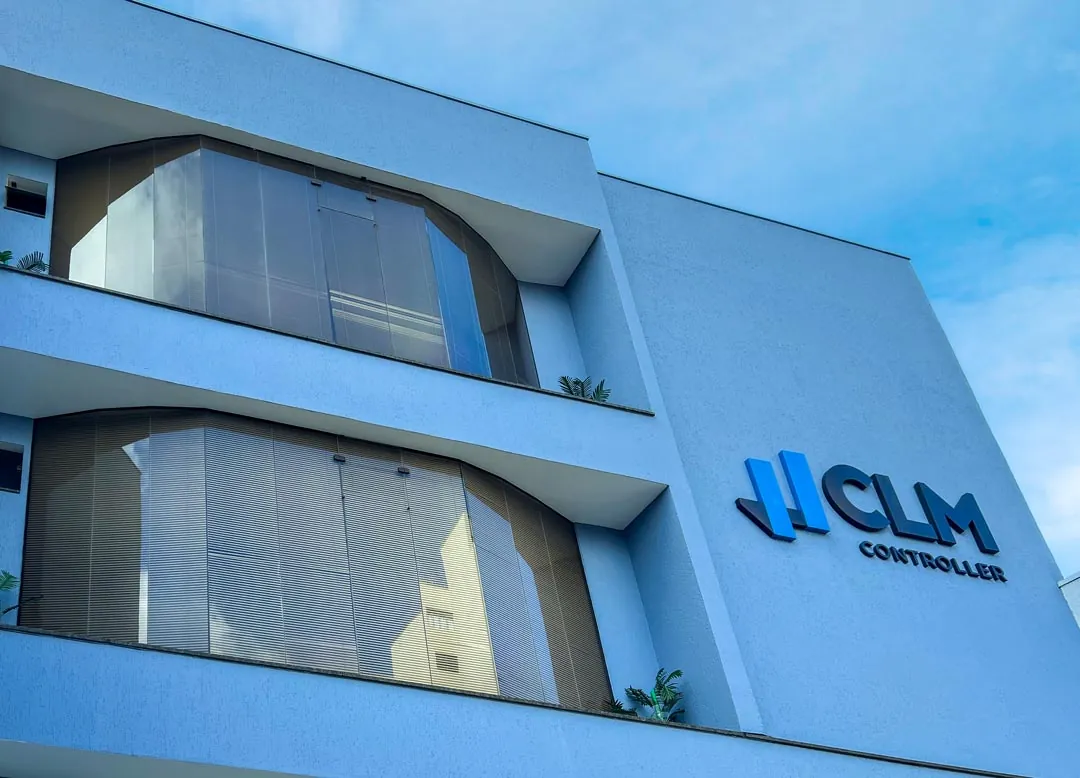Tax planning in 2026 starts with 2025 data: reduce costs, anticipate reform changes and keep your industry competitive.
Tax planning has become one of the most strategic tools for industries facing tight margins and a high tax burden in Brazil. With the changes brought about by the Tax Reform and the consolidation of the 2025 results, 2026 will be a year when anticipation will make all the difference.
The intelligent use of accounting data - balance sheets, provisions and accumulated credits - indicates where there is room to reduce costs and optimize the use of tax benefits. More than a bureaucratic practice, tax planning transforms financial information into decisions that strengthen competitiveness.
In this article, you'll learn how to apply this strategy in a practical and effective way, analyzing the figures for 2025 to guide your choices for 2026. Have a good read!
How will the data from 2025 guide tax planning in 2026?
The financial reports for 2025 serve as a kind of snapshot of the current state of the industry's tax health. They show how much was spent on taxes, where the greatest distortions occurred and which credits were not used.
The detailed analysis allows us to identify points of attention, such as:
- excess tax provisions which could have been reduced;
- ICMS, IPI and PIS/COFINS credits accumulated without compensation;
- under-exploited special regimes, which increased the tax burden.
With this information in hand, the industry designs 2026 with greater predictability, with the ability to align purchasing, sales and production strategies according to the projected tax impact.
Another important point is the comparison between different production units or subsidiaries. Often, certain industrial plants are more tax efficient because they are located in states with tax benefits or because they adopt practices that are more in line with the rules. This internal comparison reveals which models deserve to be replicated and which need to be corrected.
The history of 2025 also serves as a thermometer for predicting tax risks. Previous assessments, questions from the tax authorities or inconsistencies in digital bookkeeping should be treated as alerts for 2026. Correcting these points avoids penalties and preserves the company's cash flow.
Finally, retrospective analysis creates the basis for more accurate projections. By identifying cost trends, exchange rate variations and regional tax rate fluctuations, the industry establishes realistic scenarios for the coming year.
This facilitates both tax and financial planning, as the company integrates tax projections into its cash flow forecast.
What is the role of balance sheet analysis and tax provisions?
More than an accounting document, the balance sheet acts as a map to detect tax inefficiencies. By reviewing each line, the company identifies situations in which it has paid more tax than necessary or failed to record important credits.
Reviewing provisions is also strategic. Exaggerated provisions impact net income and reduce the industry's reinvestment capacity. Underestimated provisions have the potential to generate negative surprises, such as assessments or fines.
Cross-referencing the balance sheet and provisions provides the following actions:
- adjustment of the calculation basis of future taxes;
- identification of overpaid taxes, so that you can request the corresponding refund at a later date;
- appropriate targeting for the use of incentives regional or sectoral.

Understand your company's finances:
Balance sheet
How does reviewing special regimes contribute to tax savings?
Special tax regimes are powerful instruments, but they need to be constantly reviewed. Often, the industry adopts a fiscal model and keep it for years without checking whether it is still the most advantageous.
From the reading of the 2025 data, it is possible to check whether the chosen tax regime has really optimized the results. Issues such as sales volume, the profile of inputs used and export strategies have a direct impact on the choice of regime.
Among the points that need to be reviewed are the following:
- adaptation to the tax substitution regime in ICMS;
- impact of Presumed Profit x Real Profit on the effective load;
- incentives linked to innovation and exports.
The lack of this periodic review can lead to significant tax waste.
How does taking advantage of tax incentives reduce industrial costs?
Brazil offers a significant range of tax incentives, but many industries fail to make use of them due to a lack of specialized monitoring. Analysis of the 2025 data shows which benefits have really had an impact and which can still be exploited in 2026.
More than increasing competitiveness, the correct use of these incentives acts as a concrete tool for reducing costs, by easing the tax burden and freeing up resources for reinvestment.
Check out the main ways in which incentives can be used.
State and regional incentives
Several states offer ICMS reductions, presumed credits or exemptions linked to job creation and the installation of industrial plants in certain regions.
These mechanisms reduce tax costs immediately and also open up space for policies to expand production at lower costs.
Benefits linked to innovation and R&D
Research, development and technological innovation projects have incentives that allow significant amounts to be deducted from income tax and social security contributions.
By including this data in planning, the industry reduces tax outlays and reinvests in technology without compromising cash flow.
Credits for exports and special customs regimes
Operations aimed at foreign market generate presumed credits and access to special customs procedures, such as drawback. These mechanisms cut costs on imported inputs and reduce taxes on exports, making the product more competitive on the international stage.
Direct impact on the industry's cash flow
The correct use of tax incentives is not just about accounting benefits. It generates immediate savings, improves liquidity and reduces the need for working capital.
In this way, the industry gains momentum to sustain healthier margins, face market fluctuations and plan for 2026 with greater certainty.
Why do ICMS, IPI and PIS/COFINS deserve special attention?
These three taxes represent a significant part of an industry's costs and, at the same time, offer countless possibilities for using credits.
An in-depth analysis of the 2025 figures reveals some relevant insights:
- accumulation of ICMS credits that have not been compensated;
- undue payment of IPI in specific operations;
- flaws in the calculation of PIS/COFINS which resulted in higher disbursements.
Every detail makes a difference. The correct use of credits has a direct impact on cash flow, reducing the need for working capital and making room for new investments.
In addition, detailed management of these taxes helps to identify distortions in the final price of products and eliminate hidden costs.
Many industries still treat ICMS, IPI and PIS/COFINS only as tax obligations, But when analyzed strategically, they become instruments for structurally reducing expenses.
In this context, well-executed adjustments generate predictability, strengthen margins and ensure greater competitiveness in the face of competition.
How does the Tax Reform impact industrial tax planning?
The Tax Reform has brought profound changes, especially in the treatment of consumption taxes. The current model of ICMS, IPI, PIS and COFINS will give way to a dual VAT, made up of IBS (Tax on Goods and Services) and CBS (Contribution on Goods and Services).
For the industry, this translates into some new paradigms:
- change in the method of calculation and use of credits;
- change in the tax criteria for inputs and end products;
- need to adapt systems and accounting processes.
Anticipating these changes in 2026, based on 2025 data, ensures that the industry not only complies with legislation, but turns the tax transition into an opportunity to reduce costs and increase efficiency.
How can accounting data be transformed into strategic decisions with expert support?
Tax planning requires technical knowledge and constant updating in the face of legal changes. That's why, having the support of a specialized accounting firm like CLM Controller makes a difference.
With the right analysis, the 2025 figures stop being just reports and become strategic information. This approach provides:
- predictability in the 2026 tax burden;
- efficiency in the use of credits and incentives;
- sustainable competitiveness in a high-tax environment.
Another important aspect is the integration between accounting and strategic management. A specialized consultancy doesn't just calculate taxes: it translates complex data into practical recommendations that influence pricing, the definition of profit margins and even expansion into new markets.
In practice, this means that the industry starts to see the tax impact before making relevant decisions, such as launching a product line, expanding production capacity or signing export contracts.
Every move is analyzed not only from a commercial point of view, but also the fiscal impact it generates.
In addition, the continuous monitoring of specialized accounting ensures that the company is always aligned with the changes of the Tax Reform. As Brazilian legislation undergoes frequent changes, anticipating adjustments to systems and processes avoids rework and reduces the risk of non-compliance.
The presence of technical advice also reinforces security in relations with investors and business partners. Companies that demonstrate transparency and tax predictability convey confidence to the market, making it easier to raise funds and build strategic partnerships.
The Brazilian tax scenario is changing and requires industries to adopt an increasingly strategic stance. Anticipating the impacts of the Tax Reform and carefully analyzing the results of 2025 will be decisive in reducing costs and ensuring predictability in 2026.
With structured tax planning and the support of experts like CLM Controller, every accounting decision becomes an opportunity for growth. In this way, the industry expands its margins and positions itself solidly in a highly competitive market.
Don't let taxes compromise your industry's results. With CLM Controller, 2025 data becomes 2026 strategies that reduce costs and strengthen your market position. Talk to us!









